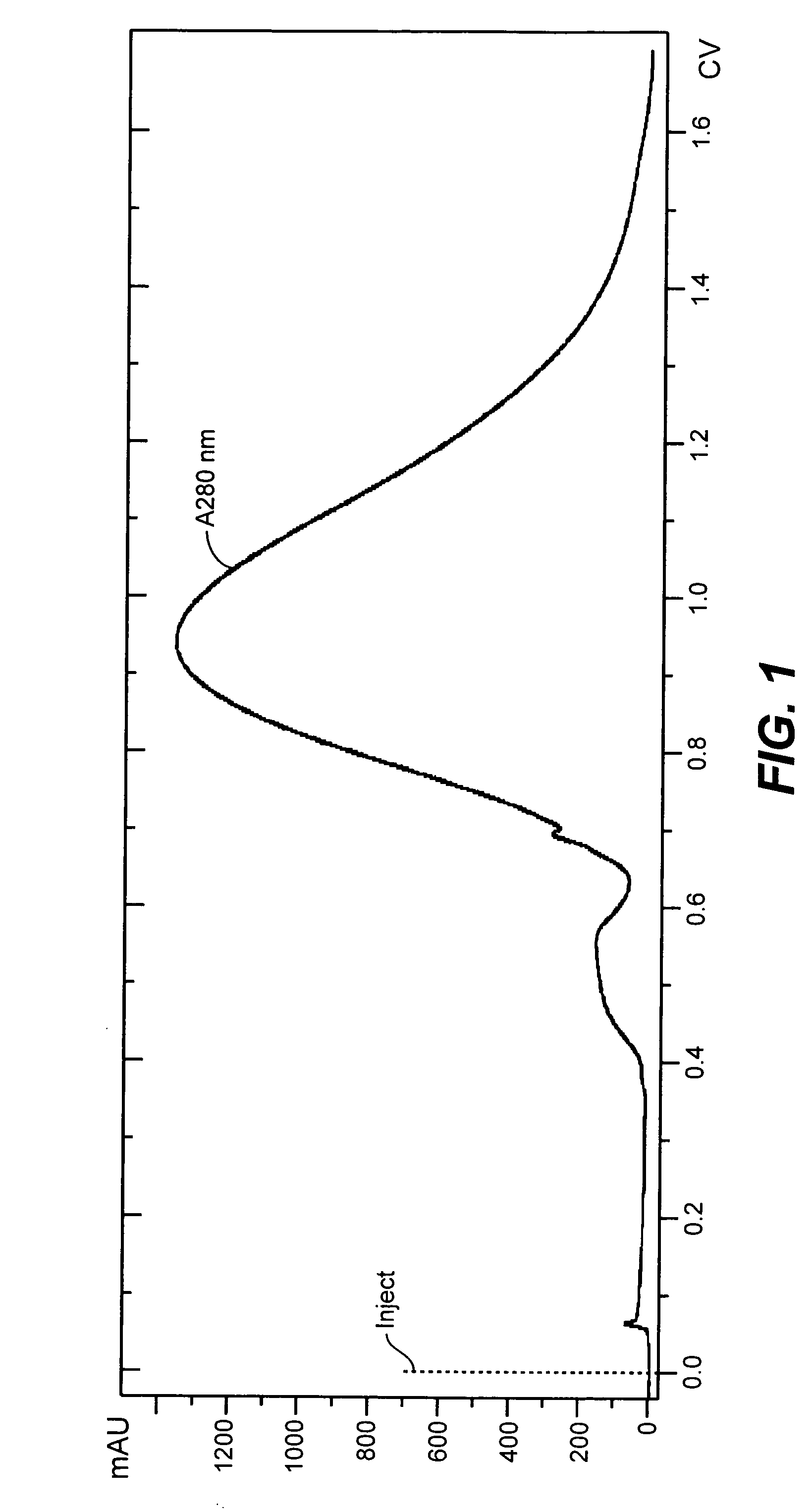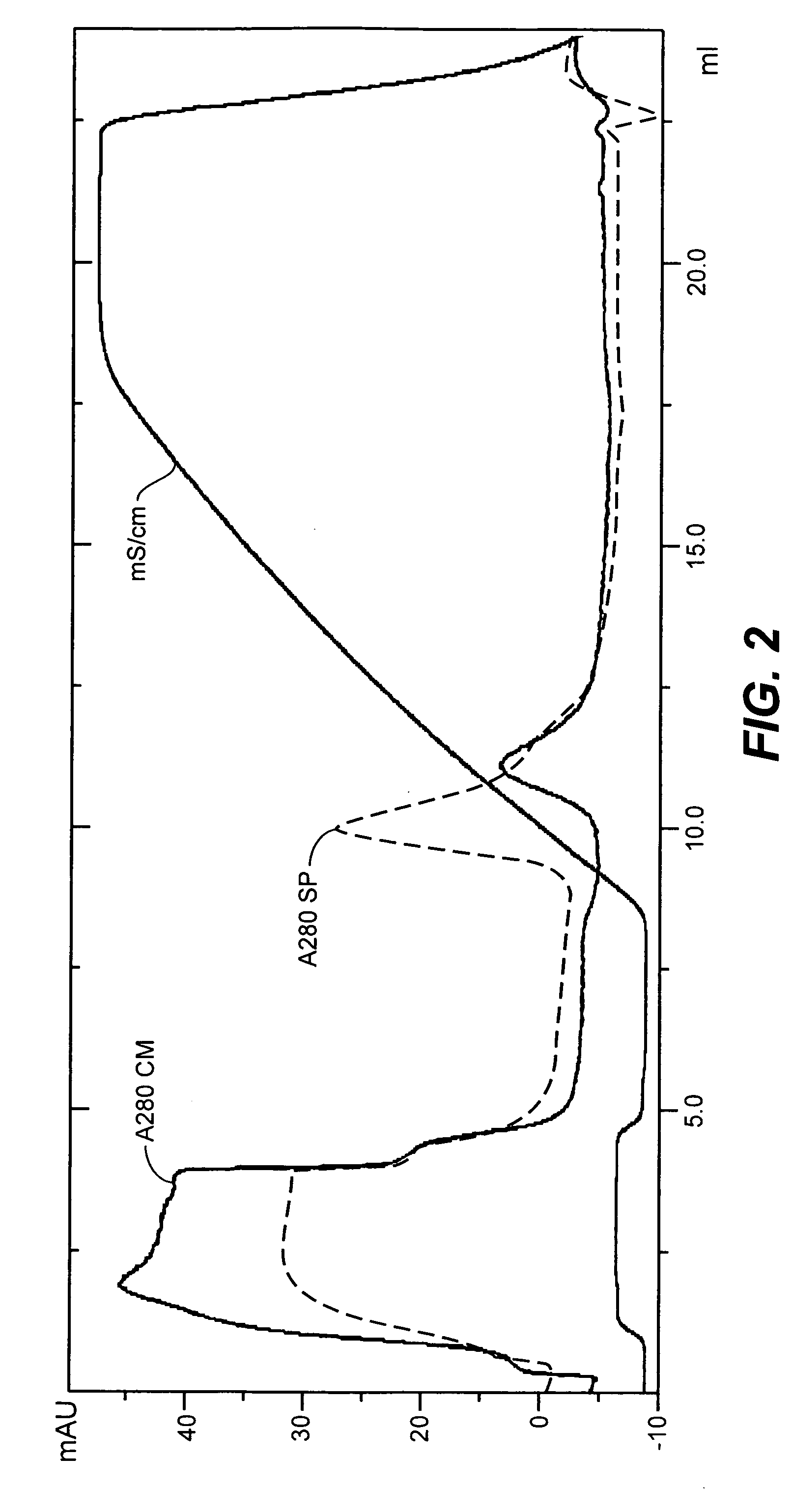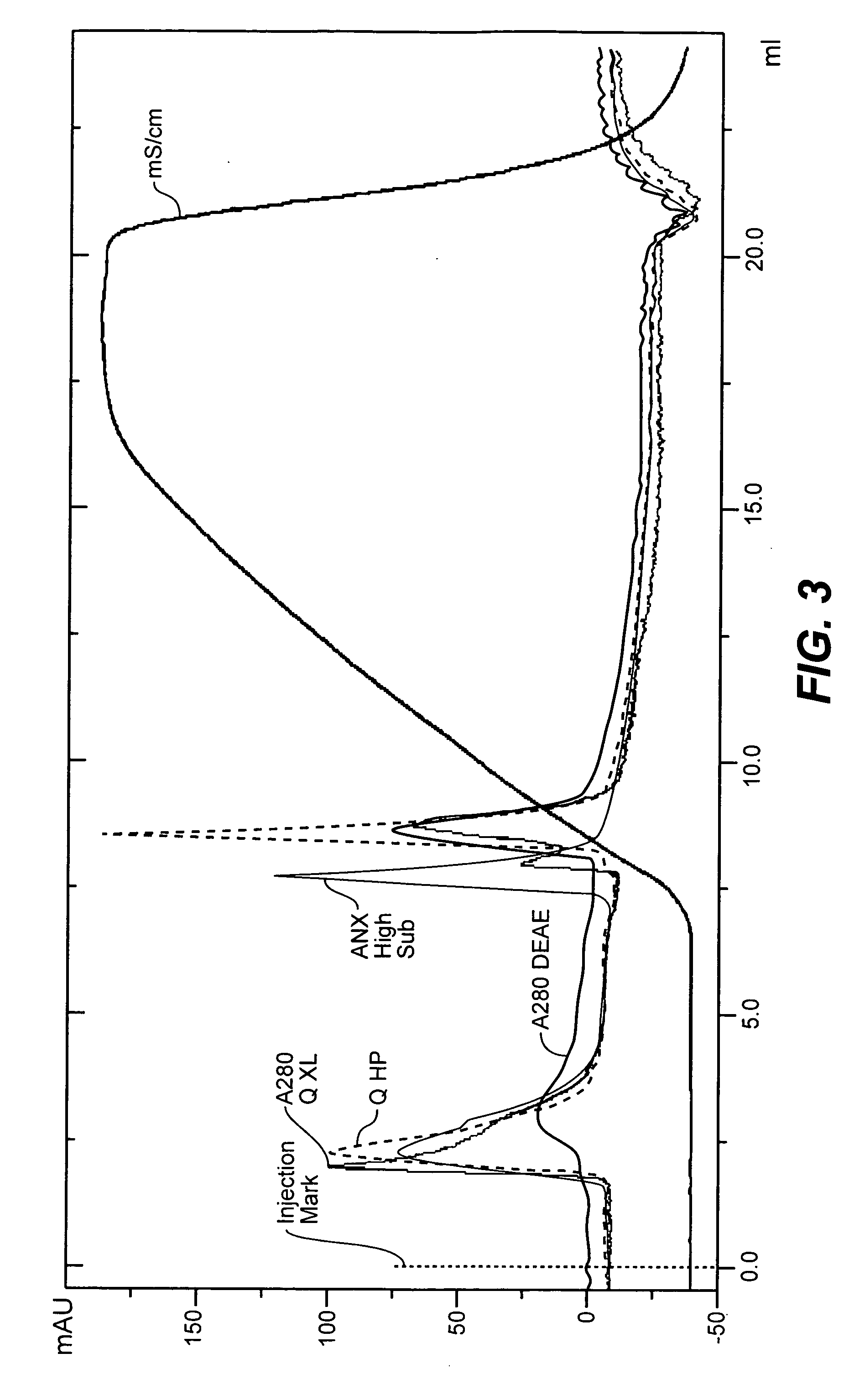Viral purification methods
a cell culture and purification method technology, applied in the field of cell culture cell purification methods, can solve the problems of no viral replication or virus particle production in these cells, tedious and time-consuming purification of viruses from cultured cells, and rendering the cost of virus production too high
- Summary
- Abstract
- Description
- Claims
- Application Information
AI Technical Summary
Benefits of technology
Problems solved by technology
Method used
Image
Examples
example 1
Clarification: Removing Cell Debris
[0135]The purpose of this Example was to develop a suitable clarification procedure that is both compatible with the protocol using detergents to lyse cells and amenable to future scale-up and manufacturing. In this Example, the lysate was filtered either through a 3 μm / 0.8 μm capsule filter or passed through a combination of a pre-filter (5 μm or 8 μm) and then a 3 μm / 0.8 μm capsule filter. All the filters used in this study had a surface area of 0.015 ft2. Based on the volume filtered through the 0.015 ft2 membrane, the capacity of the membranes was determined for large-scale filtration. Also, filtration efficiency was compared for two different membrane materials—cellulose acetate and glass fiber membrane for the 3 μm / 0.8 μm capsule filter.
[0136]Three detergents were tested. Reovirus-harboring cells were divided equally into three sterile 1 L bottles labeled for the three different lysis agents to test: 1% TRITON® X-100, 0.3% TRITON® X-100 and 0...
example 2
Concentration
[0146]To select a suitable system to concentrate and diafilter the clarified lysate, a Plate and Frame cassette (Pall Filtron, Northborough, Mass.) and a Hollow Fiber cartridge (A / G Technology, Needham Mass.) were compared. The same polyethersulfone membrane material was used in both systems. The criteria for selection were the ease of use, extent of concentration achieved and the virus titer of the product.
[0147]The Plate and Frame cassette used in this study was Pall's MINIM system, which is a laboratory benchtop unit, and the LV Centramate containing two suspended screen channel 300 kD Ultrafiltration Membranes (0.2 ft2 each). Prior to concentrating the clarified lysate, the apparatus was rinsed with 2 L of Reverse Osmosis (RO) water (USP grade) to flush out the storage gel. The cassettes were sanitized with 2 L of warmed 0.1N NaOH. The system was then drained, rinsed with 2 L of RO water and conditioned with the growth medium for the virus. The whole system was drai...
example 3
Ion Exchange
[0154]Viruses have different surface charges due to their different surface molecules. Therefore, it is possible to purify viruses using ion exchange chromatography, and the conditions will vary depending on the nature of the viruses. Accordingly, we tested ion exchange chromatography conditions of various pHs for reovirus purification. Reovirus was produced, extracted and filtered as described above and subjected to ion exchange chromatography at different pH. The titer after each step was determined and is set forth below in Table 2.
[0155]
TABLE 2The effects of ion exchange chromatography at various pHCorrectedTiter ± 95% CIVolumeTiter ± 95% CISample(Log10TCID50 / ml)Correction2(Log10TCID50 / ml)Spiking Virus Control, 10 / 30 / 018.05 ± 0.47——Certified Titer of RE3013101P8.35 ± 0.27——Negative ControlNo virus detected——ONC 101, Bulk harvest**——ONC 102, Post filtration9.18 ± 0.36—9.18 ± 0.36ONC 103, Post Column, Strong Cation pH 4.05.93 ± 0.241.025.94 ± 0.24ONC 104, Post Column, ...
PUM
| Property | Measurement | Unit |
|---|---|---|
| molecular weight | aaaaa | aaaaa |
| pH | aaaaa | aaaaa |
| pH | aaaaa | aaaaa |
Abstract
Description
Claims
Application Information
 Login to View More
Login to View More - R&D
- Intellectual Property
- Life Sciences
- Materials
- Tech Scout
- Unparalleled Data Quality
- Higher Quality Content
- 60% Fewer Hallucinations
Browse by: Latest US Patents, China's latest patents, Technical Efficacy Thesaurus, Application Domain, Technology Topic, Popular Technical Reports.
© 2025 PatSnap. All rights reserved.Legal|Privacy policy|Modern Slavery Act Transparency Statement|Sitemap|About US| Contact US: help@patsnap.com



